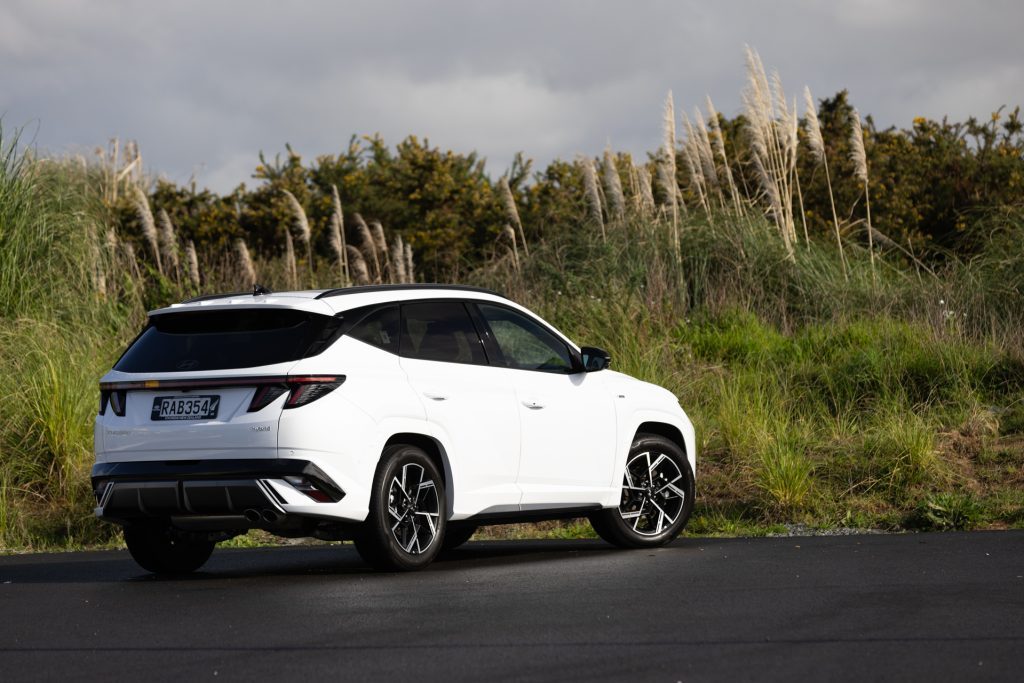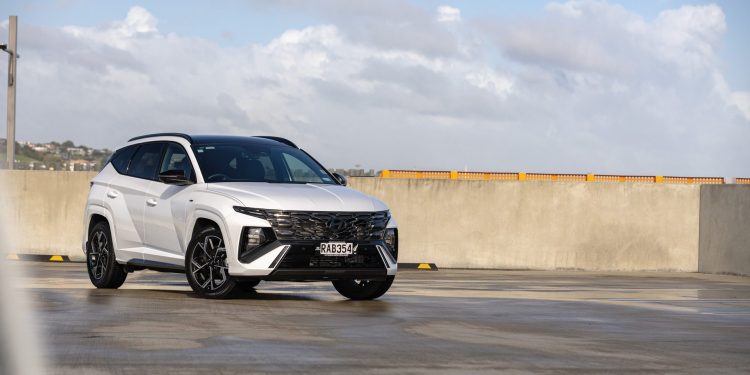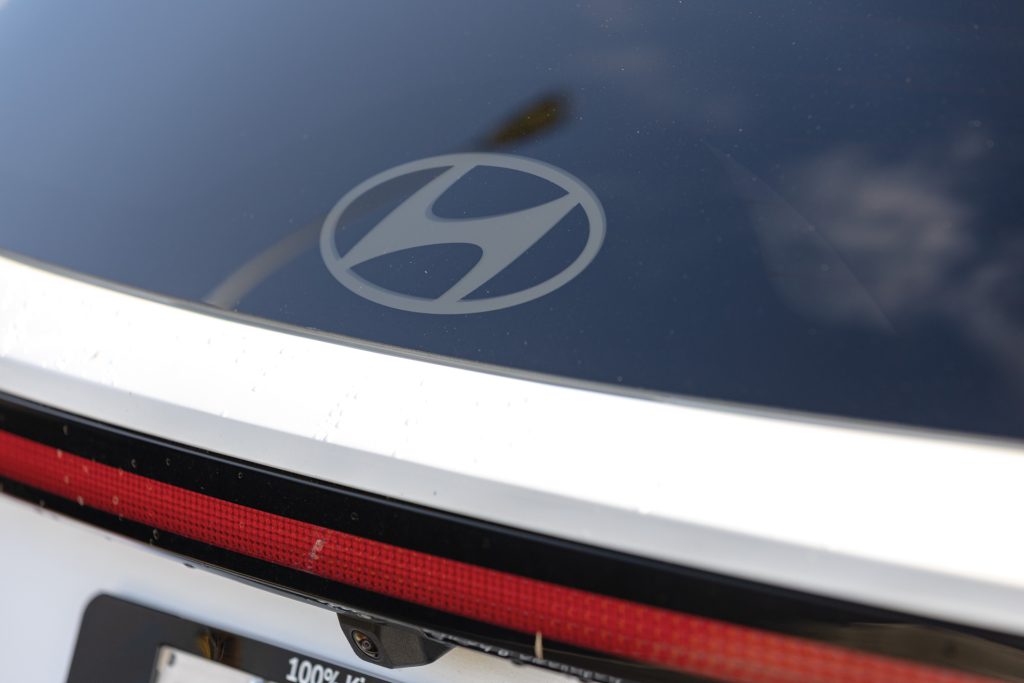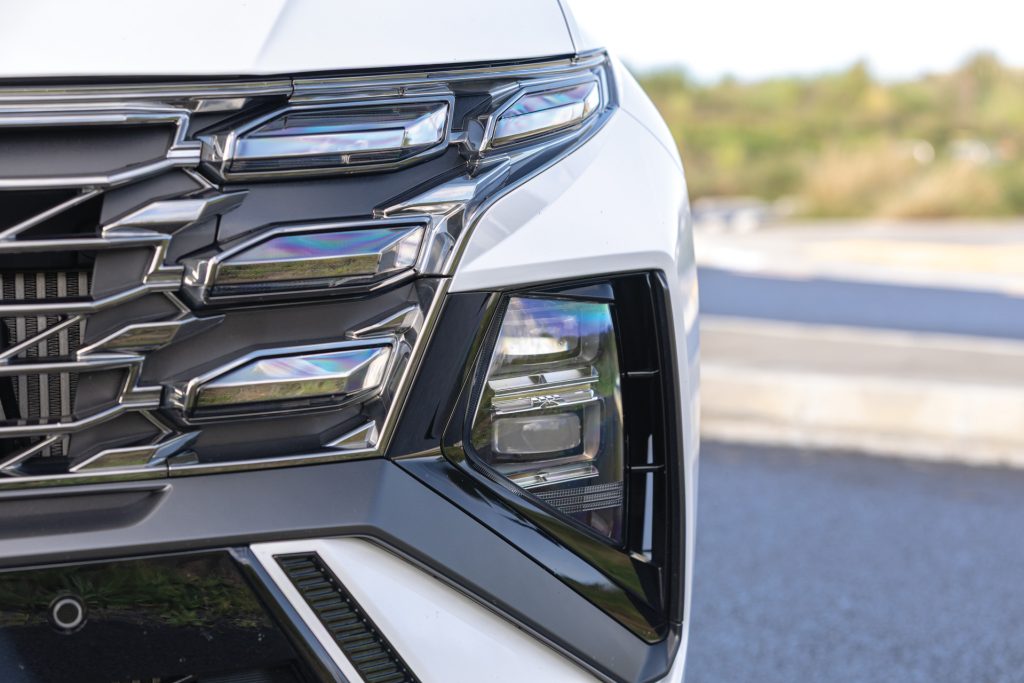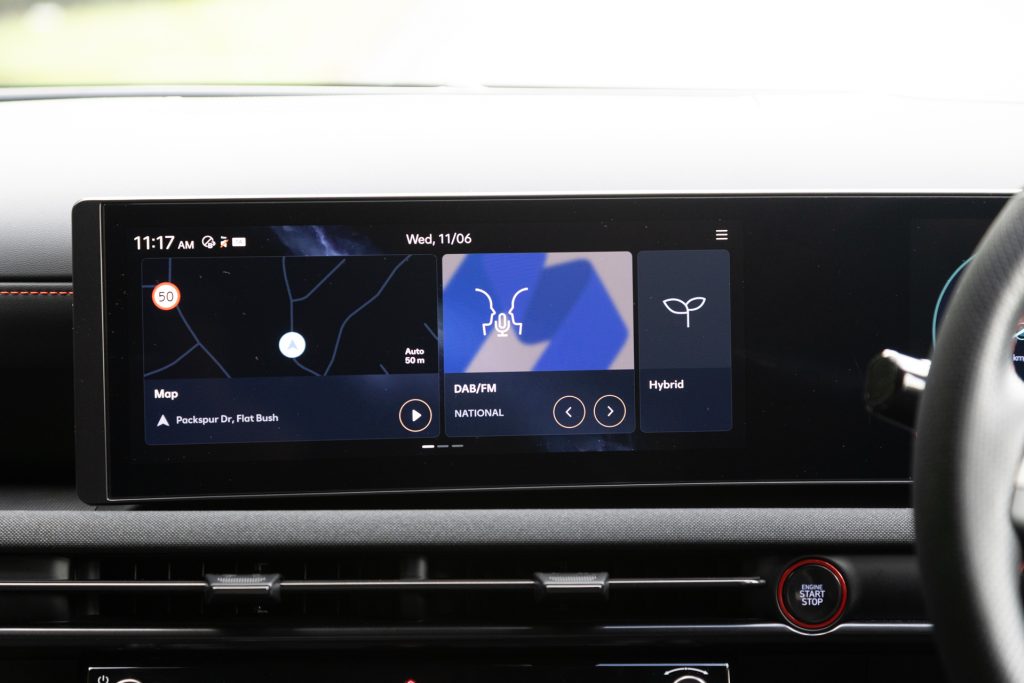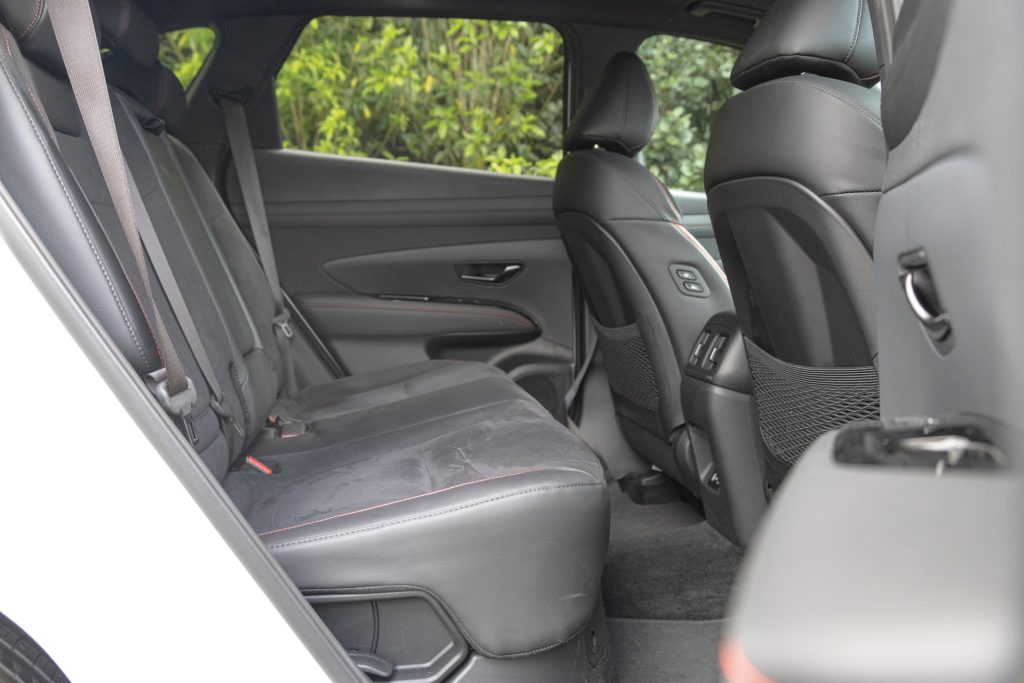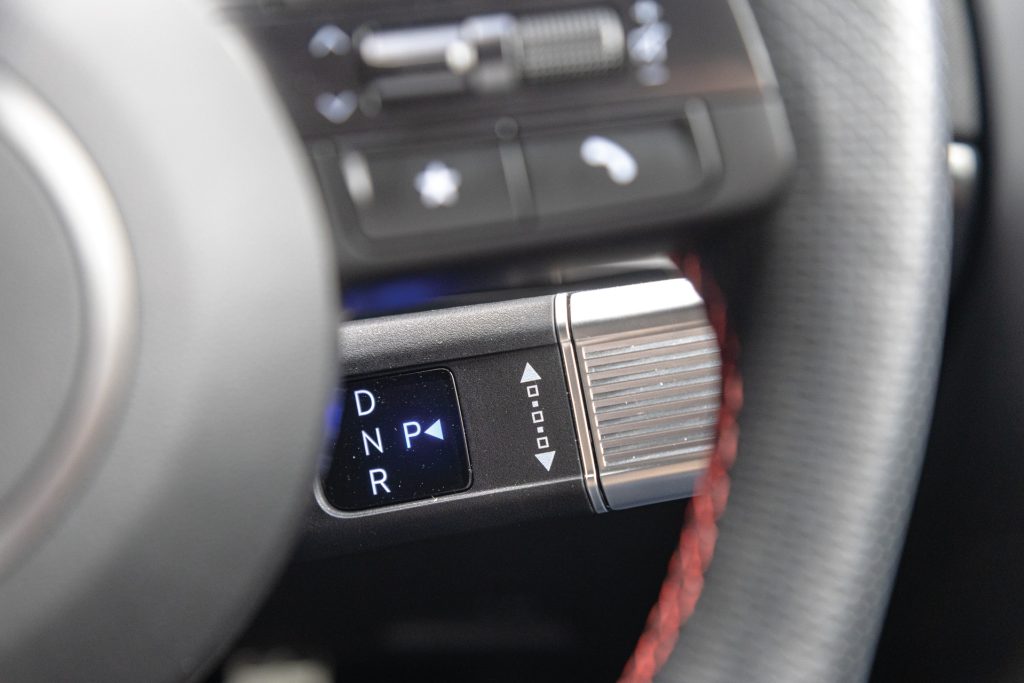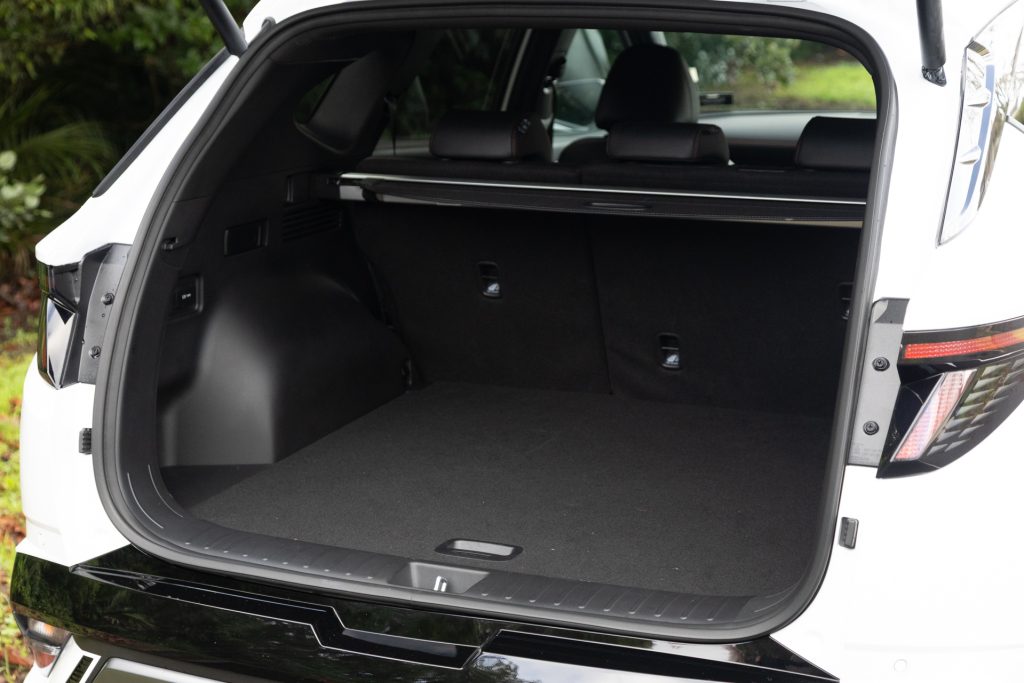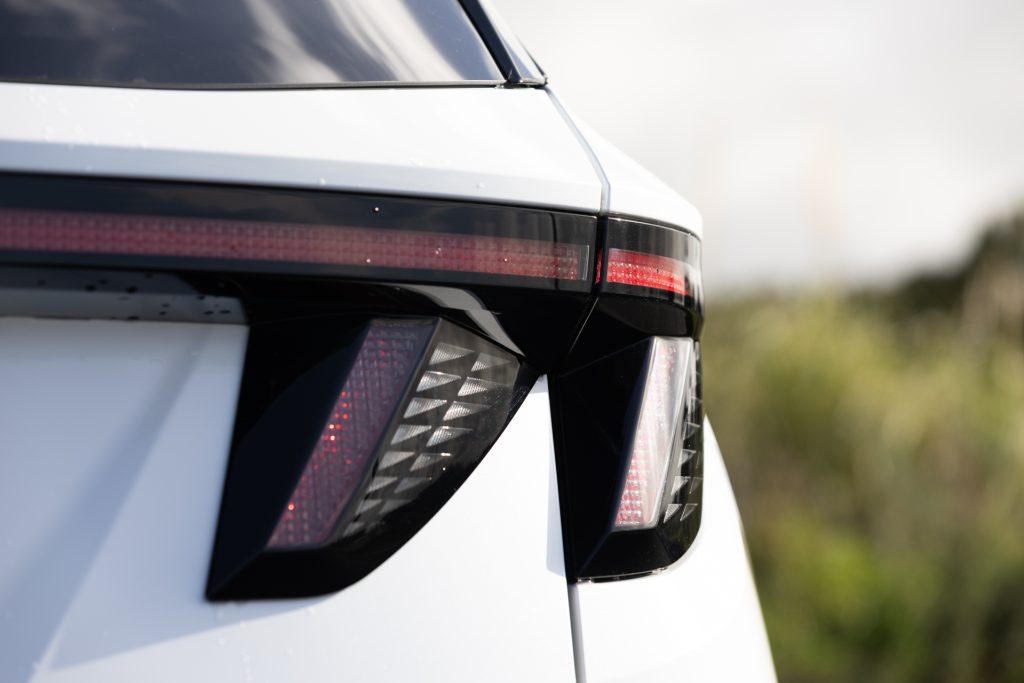2025 Hyundai Tuscon Hybrid N-Line Limited Review
Words: Peter Louisson | Photos: Alex Schultz
Hyundai has launched a face-lifted Tucson, Series II. And it’s a really good, practical, well built medium SUV, with lots of sensible ideas. Only two things dull the sheen.
Tucson features typical exterior and interior updates – new grille, headlights, screens, and a gear selector now sited on the right side of the steering column. The more important news is its fresh hybrid powertrain. This comprises a 132kW/264Nm 1.6T engine that works alongside a 44kW/264Nm motor powered by a 1.5kWh lithium-ion battery. The system total is 172kW and 367Nm, with overall fuel use a rightcar-verified 5.9L/100km (134g/km). Which isn’t bad, a little above rival RAV4’s 5.3 figure. We managed 6.0 on the open road, and you’d doubtless do better in town where it has more potential to EV. Head down any hill and mostly it switches to EV mode and it can maintain that on the flat for a bit as well. It can tow too, up to 1900kg braked. And range with a full 52L tank is roughly 800km if you can hit the mean combined fuel use figure.
A six-speed auto handles the output, with paddles that alternate between shifting gears and changing levels of recuperation. Cunning, though a good auto doesn’t really need paddles. That said, this one only has six-speeds. Yes, you’re thinking, but this is just a medium SUV and with the added motivation of electrification it doesn’t really need any more gears. That’s true in part but then this range-topping N Line Limited model isn’t exactly any ordinary medium SUV on account of it costing $71,990 plus ORCs. Holy moly, that’s a lot of moola, you’re probably also thinking. Cos we were…until you consider how much gear this has on board.
Aside from AWD for a spot of soft-roading (snow, mud and sand drive modes) this has a mesmerising level of spec. It gets a unique grille, aerodynamic accents and larger alloy wheels on the outside. Inside, there’s Alcantara and leather trim, a panoramic sunroof, HUD, bigger 12.3-inch touchscreen with surround-view monitor and Bose audio. The ‘sports’ seats themselves, well, they’re heated and vented, and feature power operation.
There’s also a powered tailgate, adaptive cruise control with stop and go and wireless mobile phone hook-up and charging.
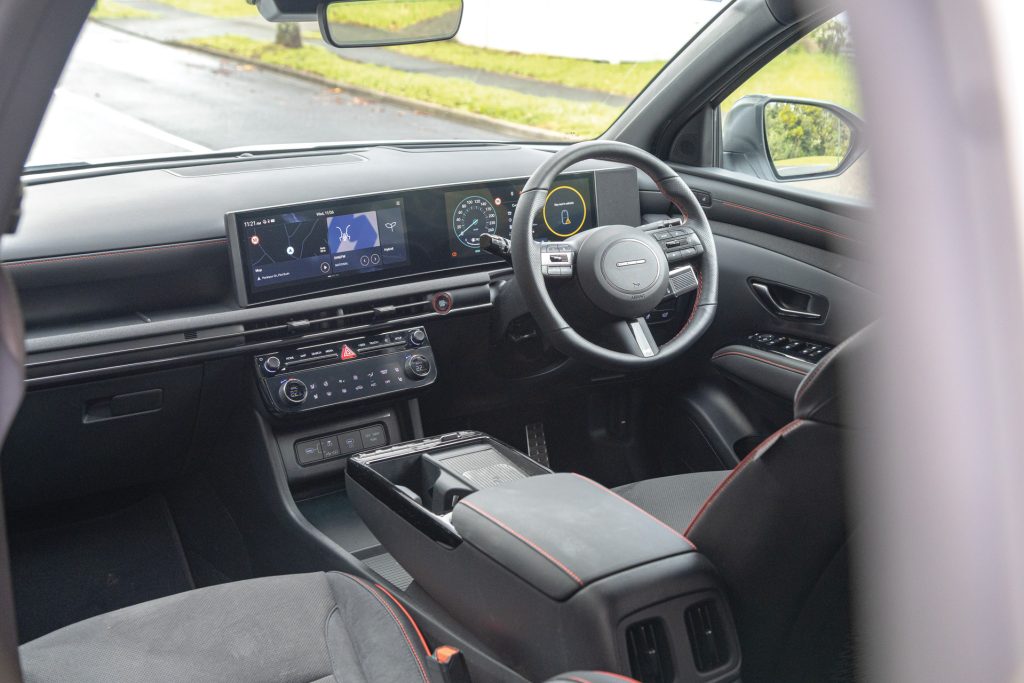
Divesting all control to the central touchscreen and ridding the cabin of buttons may save money for car makers but it drives owners to distraction, literally. It was top of the list of gripes in a recent UK Driver Power survey. However, some do it better than others, and Tucson is amongst the more sensible offerings here, despite it being absolutely loaded with convenience and safety gear. Right down to ambient lighting and USB charge ports.
But it bongs and chirps and bleeps at you too much so best to turn off the annoyances before setting out. In Tucson that’s quite easy. A star button brings up the driver assist menu, where you can quickly cull the overspeed warning and the lane keeping assist. That takes all of 10sec. A pity you have to do it each time but. Then go to the HVAC screen and dial up the heated wheel and heated seats. No submenus needed. Or if it’s summer, seat ventilation.
Then you can set off. Likely as not it will start out in EV mode. Which is nice if you’re setting out really early, not waking the rest of the family. Also clever is the Qi charger that has a trio of green lights to tell you when the phone is fully charged. There are a lot of oddments areas too, like where the shifter used to be, most of them rubber lined.
And there’s really rather a lot of room in this, thanks to a 75mm stretch in wheelbase. It’s slightly longer overall too at 4650mm, up by 20mm. Certainly enough for three decent sized bods in the back, helped by only a hint of a floor hump. Activate the fifth door and there’s plenty of room for whathaveyou, our golf clubs fitting diagonally with enough room left for the trundler, no worries. And the floor pulls out for ease of cleaning. Capacity is rated at 582L-1903L.
Dynamically, this is just what you’d expect of something with decent rubber, AWD and fully independent suspension all round. It keeps up with sedans no trouble, especially if they’re busy comfort braking into bends. And all the while the ride is only ever controlled and cosseting, as are the seats.
So I guess with this N-Line range topper, you’re paying for all the extras. Without the AWD, the entry-level Hybrid Active kicks off at $54,990. If that blows the budget, there’s always the naturally aspirated 115kW/192Nm 2.0 model at $45k. And there are four hybrids in between the base and top models.
If there’s one other little fly in the ointment, it’s the fact that Kia has its Sportage range which, to my mind, looks smarter. Not that Tucson doesn’t; that’s personal. Where there was formerly just a single FWD Sportage hybrid now all but one model has the hybrid powertrain.
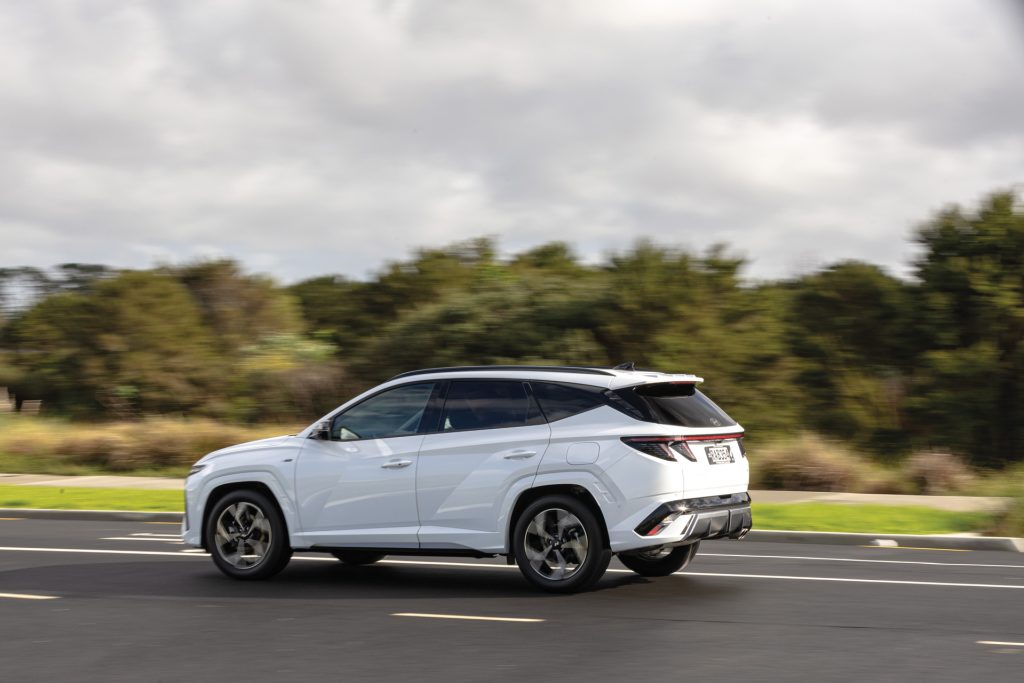
Hyundai Tucson 1.6T Hybrid N-Line Limited AWD
$71,990 / 5.9L/100km / 134g/km
0-100 km/h 8.4s
Engine 1598cc / IL4 T/DI
Max power 134kW
Max torque 264Nm
Motor 44kW / 264Nm
System Total 172kW / 367Nm
Transmission 6-speed auto, AWD
Weight (claimed) 1755kg
